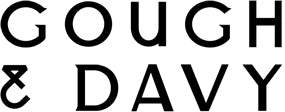
What Was The First Keytar?
Many accessories for guitar are designed to provide greater functionality and the capability to produce effects and musical soundscapes that would not be possible with six strings and an amp.
These range from multi-effects processors and pedal boards to more esoteric systems such as the EBow. However, some musicians want to take this experimentation further and combine the capabilities of a synthesiser with the expressiveness of a guitar.
This is where many musicians gravitate towards the keytar, a shoulder-slung keyboard with a neck containing a range of instrument controls such as sustain, vibrato and pitch-bending.
The keytar’s story begins, rather surprisingly, in 1795, predating the electrical telegraph by two decades.
The orphica was a strange shoulder-slung small piano, played similarly to a modern keytar and complete with a long neck.
This was followed in the mid-19th century by the piano accordion, a variation of the bellows-based musical instrument which replaces the traditional button-based accordion in 1852.
However, it would take until the 1960s and 1970s and the rise of the synthesiser in rock music to accelerate the development of the keytar.
By this point, the rise of lead guitarists such as Jimmy Page had led to other parts of the band wanting to feel freer and less tied down during performances.
One of the earliest major examples of this was Edgar Winter, who would frequently play with a keyboard or electric piano around his neck, a system famously seen in early 1970s performances of songs such as Frankenstein.
Ultimately, Mr Winter would team up with Hillwood to produce the Rockeyboard RB-1, a lightweight remote keyboard that lacked a neck but was considered to be the first “true” keytars, although Weltmeister’s Basset and Jon Mustad AB’s Tubon both predated the RB-1.
This would lead in 1980 to the production of the Moog Liberation, the first mass-produced keytar, alongside the Roland SH-101 and the Yamaha SHS-10.






